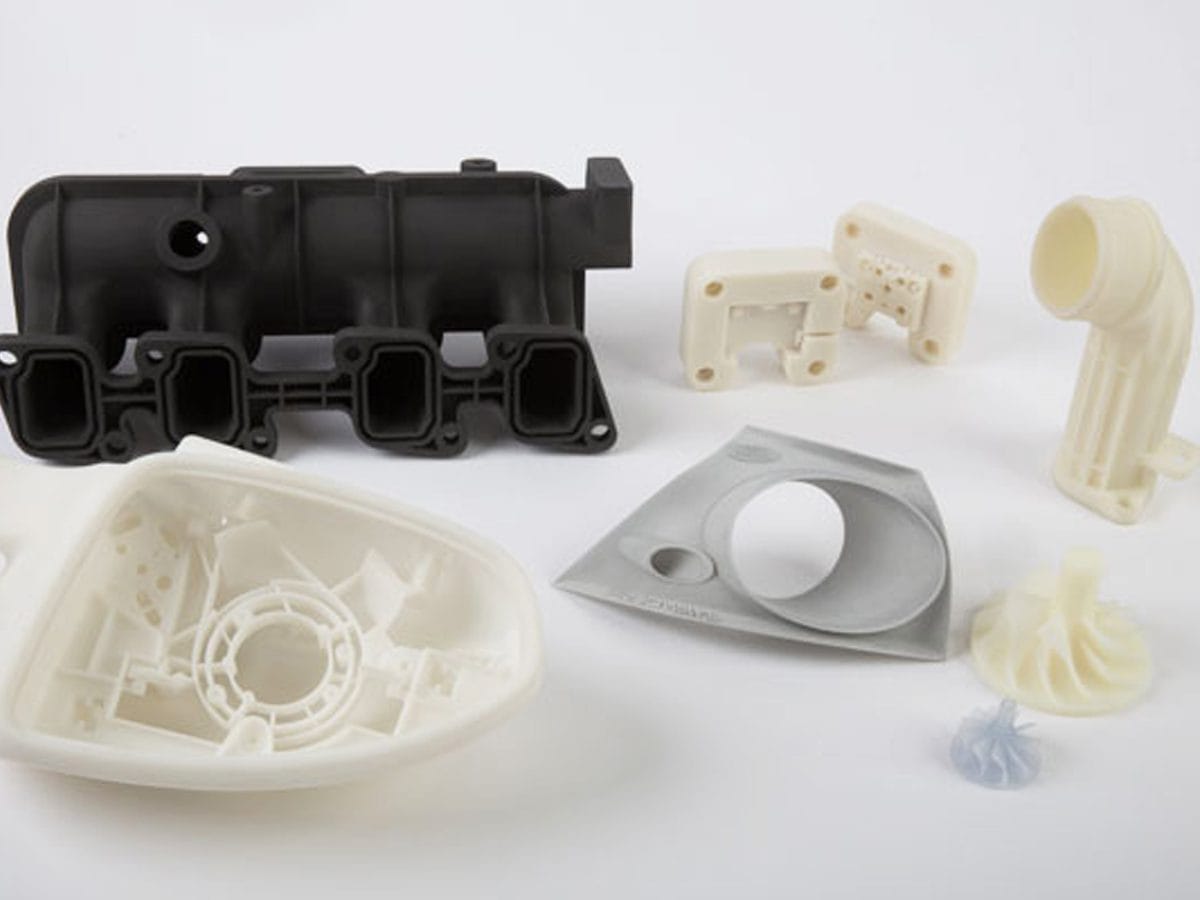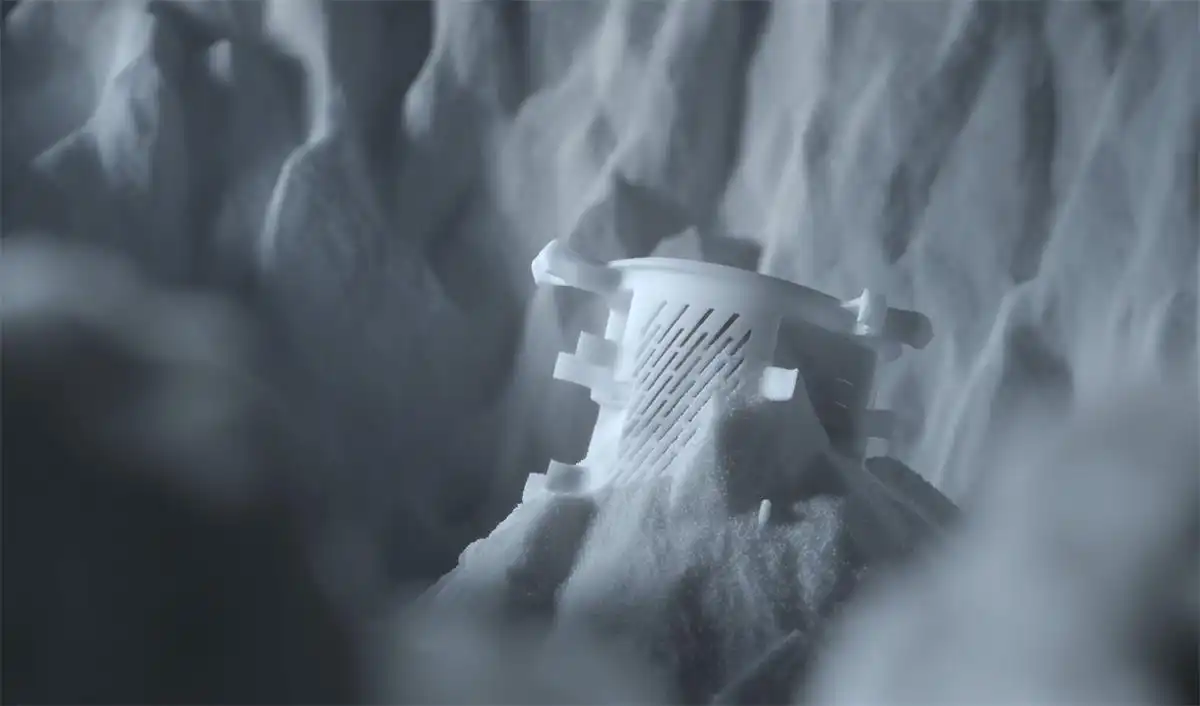Since its inception over 30 years ago, selective laser sintering (SLS) 3D printing has proven transformative across industries from aerospace to medical for its ability to turn 3D CAD data into durable, functional parts without dedicated tooling. But where is this technology heading next?
In this deep dive, we explore the emerging trends and developments poised to push SLS additive manufacturing into its most disruptive and mainstream phase yet. Read on for an insider’s look at the future of SLS 3D printing.
Pushing Deeper Into Final Part Production
A major trajectory for SLS 3D printing is expansion from prototyping into true, end-use part production. Traditionally, SLS excelled at design validation models requiring high heat or chemical resistance. But with machines delivering enhanced accuracy and surface finishes, SLS is increasingly used for short-run production across aviation, automotive, consumer products and more.

Several factors enable this transition:
-
01
•Bigger build volumes – Larger machines accommodate mass production of consolidated, lightweight assemblies.
-
02
Faster print speeds – Dual laser systems dramatically accelerate cycle times for volume throughput.
-
03
Expanded materials – From composites to reactive metals, the SLS material palette now includes over 60 production-grade options.
-
04
Surface enhancements – Combining SLS with vapor smoothing and other finishing creates parts rivaling injection molding quality.
As SLS hardware, materials, and finishes continue to mature, use for end-part manufacturing will skyrocket.
Unlocking New Geometries and Applications
Another key trajectory is leveraging SLS design freedom to enable next-generation applications. Without the constraints of traditional tooling, SLS facilitates unprecedented shapes like foams, lattices, and bionic structures optimized for durability and lightweighting.

Researchers are also tapping these unique capabilities for novel uses:
-
01
Periodic cellular structures – For structural composites and impact absorption with tunable mechanical properties.
-
02
Dissolvable scaffolding – To support the 3D printing of soft or suspended materials then dissolve away.
-
03
•Metamaterials – Geometries unattainable by other methods exhibiting exotic properties like negative stiffness or cloaking.
-
04
•Tissue engineering – SLS of biocompatible polymers as customizable scaffolding to grow bone, cartilage and other human tissue.
By leveraging its freeform fabrication abilities, SLS will continue finding applications across groundbreaking research and industrial innovation.
Streamlining Supply Chains with On-Demand Inventory
Many manufacturers still rely on extensive global supply chains, warehousing, and logistics prone to delays and inflated costs. SLS digital manufacturing enables a paradigm shift through on-demand production.

With SLS, companies can:
-
01
Print replacement parts – On short notice for maintenance, repairs and warranty fulfillment.
-
02
Optimize inventories – Produce only what is immediately required rather than stocking excess.
-
03
Consolidate warehousing – Store digital part files vs. physical parts.
-
04
Localize production – Deploy printers near end-customers for faster fulfillment.
Automating Production with AI and Industry 4.0 Integration
To fully actualize digital manufacturing potential, SLS systems are integrating with smart factory and Industry 4.0 infrastructure. This connectivity and automation will help drive widespread adoption.
Key innovations in this area include:
-
01
Process monitoring sensors – For real-time print optimization and anomaly detection.
-
02
In-line quality inspection – Automated scanning validates part integrity during production.
-
03
Machine learning algorithms – Use historical data to predictively enhance print quality.
-
04
Digital supply networks – Exchange designs, materials, and capacity across distributed, interconnected production centers.
-
05
Autonomous optimization – Self-adjust machine parameters and scheduling for 24/7 unmanned production.
By harnessing data and automation, SLS production will scale new heights in consistency, efficiency, and reliability.
Accelerating Innovation Through Design Automation
Generating designs optimized for additive manufacturing remains a challenge. Emerging generative design software leverages AI to automate this process.
By inputting parameters like performance goals, spatial constraints, materials options, and manufacturing methods, the software explores thousands of design permutations. It outputs the ideal geometry tailored to production via SLS or other 3D printing processes.
Automated design-for-AM tools will accelerate innovation by:
-
01
Reducing design timelines – No need to manually model every iteration.
-
02
Uncovering unconventional solutions – AI considers possibilities beyond human imagination.
-
03
Maximizing performance – Discovers configurations based on simulated physics and data.
-
04
Services for a global network of creators.
-
05
Minimizing weight – Generates ultralight lattice and cellular structures.
-
06
Streamlining topology optimization –swiftly generates shapes perfectly suited to additive manufacturing.
As this software matures, companies will be able to invent revolutionary products faster and more cost-effectively than ever.
Conclusion: An Additive Future
SLS 3D printing has already redefined possible across countless industries, enabling complex geometries, consolidated assemblies, lightweight strength, and digital manufacturing. But as these trailblazing trends demonstrate, SLS technology still has enormous untapped potential at the cusp of realization.
From expansive applications in final part production to groundbreaking research, automated mass customization, and AI-driven design, the future is undeniably additive. By adopting SLS technology today, innovative organizations of all sizes can gain a competitive edge and define the future of manufacturing.


